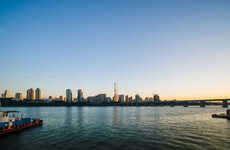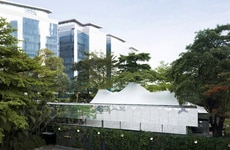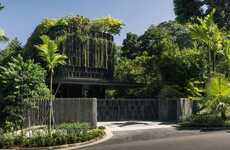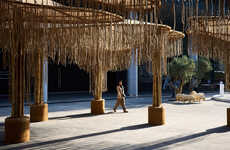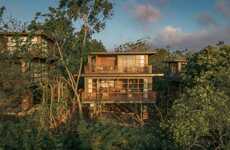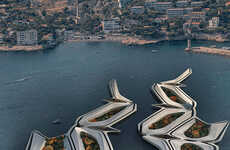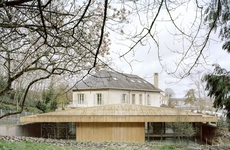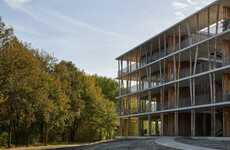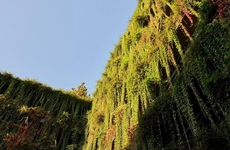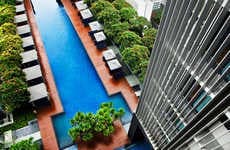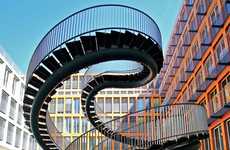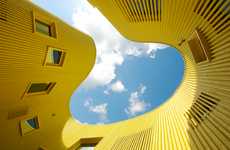
The Agung Sedayu Center Will Thrive Amidst a Sea of Mangroves
Amelia Roblin — June 22, 2011 — Eco
Anyone who thought office towers wouldn't suit the natural landscape must admit that the Agung Sedayu Center looks right ad home amidst this blanket of mangroves in Jakarta.
The fact of the matter is, that cities are growing increasingly more crowded, and although allowing infrastructure to encroach on the lush plant life of a relatively untouched topography isn't ideal, this architectural suggestion might just win you over.
A team of designers made up of Nidia Safiana, Agung Mahaputra, Arief Aditya Putra, Andika Priya Utama, Rahadi Utom and Dely Hamzah conceived this arboreal skyscraper with the utmost attention to environmental issues. The pliable skeleton will adjust to allow desired light penetration for passive heating and to reduce electrical demands. The stringy white structures of the 'Mangrove' Agung Sedayu Center will employ sustainable ventilation systems, making this building a true extension of its forest surroundings.
The fact of the matter is, that cities are growing increasingly more crowded, and although allowing infrastructure to encroach on the lush plant life of a relatively untouched topography isn't ideal, this architectural suggestion might just win you over.
A team of designers made up of Nidia Safiana, Agung Mahaputra, Arief Aditya Putra, Andika Priya Utama, Rahadi Utom and Dely Hamzah conceived this arboreal skyscraper with the utmost attention to environmental issues. The pliable skeleton will adjust to allow desired light penetration for passive heating and to reduce electrical demands. The stringy white structures of the 'Mangrove' Agung Sedayu Center will employ sustainable ventilation systems, making this building a true extension of its forest surroundings.
Trend Themes
1. Sustainable Architecture - The Agung Sedayu Center demonstrates the trend of sustainable architecture by incorporating environmental considerations into its design.
2. Green Infrastructure - The use of a mangrove-inspired design at the Agung Sedayu Center showcases the trend of incorporating green infrastructure into urban landscapes.
3. Passive Design - The adjustable skeleton of the Agung Sedayu Center reflects the trend of using passive design strategies to optimize natural lighting and ventilation.
Industry Implications
1. Architecture - The architecture industry can explore innovative ways to incorporate sustainable design principles into their projects based on the Agung Sedayu Center's successful implementation.
2. Construction - The construction industry can capitalize on the demand for green infrastructure by specializing in the development of environmentally conscious buildings like the Agung Sedayu Center.
3. Real Estate - The real estate industry can uncover new opportunities by promoting eco-friendly properties, such as the Agung Sedayu Center, to meet the growing demand for sustainable living spaces.
5.2
Score
Popularity
Activity
Freshness

